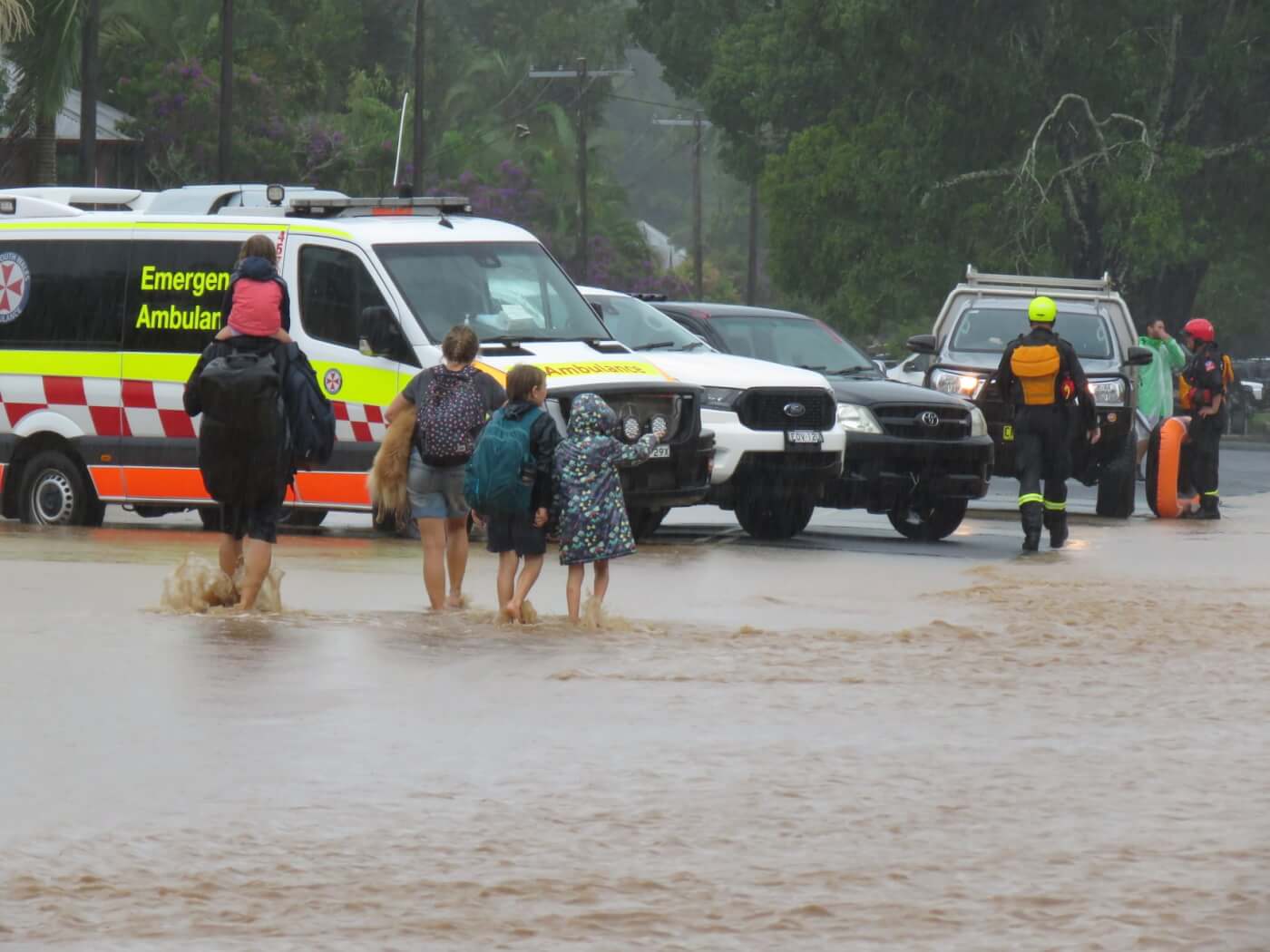
How to Prepare for Flooding When You Have Animal Companions
Summer storms in Australia can produce damaging winds, widespread rainfall, and dangerous flooding. By making plans in advance, you can ensure that all your loved ones can weather any storm – including the animals in your care.

Prepare for Floods Now, Not Later
Don’t wait until the day before floodwaters arrive on your front doorstep to think about your emergency plan. Here are some steps you should take ahead of time:
- Make sure dogs and cats are microchipped and have up-to-date identification information on their collars, including your phone number.
- Prepare an animal emergency kit, which should include a harness and a leash, a carrier for small animals, food for at least a week (that need not be refrigerated), food and water bowls, a copy of your animal companions’ medical records, and clear instructions for the treatment of any medical conditions. If you have a cat, also include litter and a small litter tray.
During an Emergency
Keep an eye on warnings issued by the Bureau of Meteorology and your local ABC affiliate. In the event of a disaster, evacuate as soon as possible, and if you need to move animals to a safe location, do so quickly to avoid unnecessary risk.
- If at all possible, don’t leave animals behind to fend for themselves. There is no way of knowing what will happen to your home while you’re away, and you may not be able to return for days or even weeks. If taking animals with you is impossible, see the next section for advice.
- Place small animals in secure carriers. Snakes and lizards need to be transported in containers with a secure lid and air holes. Dogs should be leashed and wearing harnesses. Be sure to take along the animal emergency kit that you’ve prepared (see previous section).
- Know your destination ahead of time. Not all evacuation centres will accept animals, so plan alternatives accordingly. Motels often allow dogs, cats, and other animal companions to stay on the premises or will waive their non-animal rules in the event of an emergency. Other options include boarding kennels (for which you’ll need to ensure vaccinations are up to date) or the homes of family members or friends who are out of harm’s way.
If Authorities Force You to Leave Your Animals Behind
To avoid this situation, make plans to evacuate your animals early. If this isn’t possible, please follow this advice:
- Never, ever tether or chain animals.
- Never turn animals loose outdoors – they can’t survive “on instinct”. Domesticated animals rely on their human companions for many things and are extremely vulnerable outside, especially in bad weather. Instead, leave them in a secure area inside your home with access to upper floors in case of rising floodwaters. For single-level homes, consider providing access to higher ground by positioning a heavy chair near a bench. Make sure that food and water are available there.
- Leave out at least a 10-day supply of water. Fill every bowl, pan, and Tupperware container that you have with water and then set them on the floor or on counters. A single bowl is insufficient, as it may spill. Fill sinks and tubs, too. If your toilet bowl is free from chemical disinfectants, leave the toilet seat up to provide animals with one more source of water, but don’t make that the only source.
- Leave out at least a 10-day supply of dry food. Canned food will go bad quickly. Place supplies in high but accessible areas in case of floodwaters.
- Leave a note on the front door, in the mailbox, or in a window with your contact details and information about the animals in your home. Print and fill out these “My Animal Is Home Alone!” cards provided by the RSPCA to display in order to alert first responders that animals are on the premises.
Although it’s impossible to prevent flooding and other natural disasters, proper planning can help reduce risks to animals and save lives.
Help Animals in 2025: Renew Your PETA Membership!

